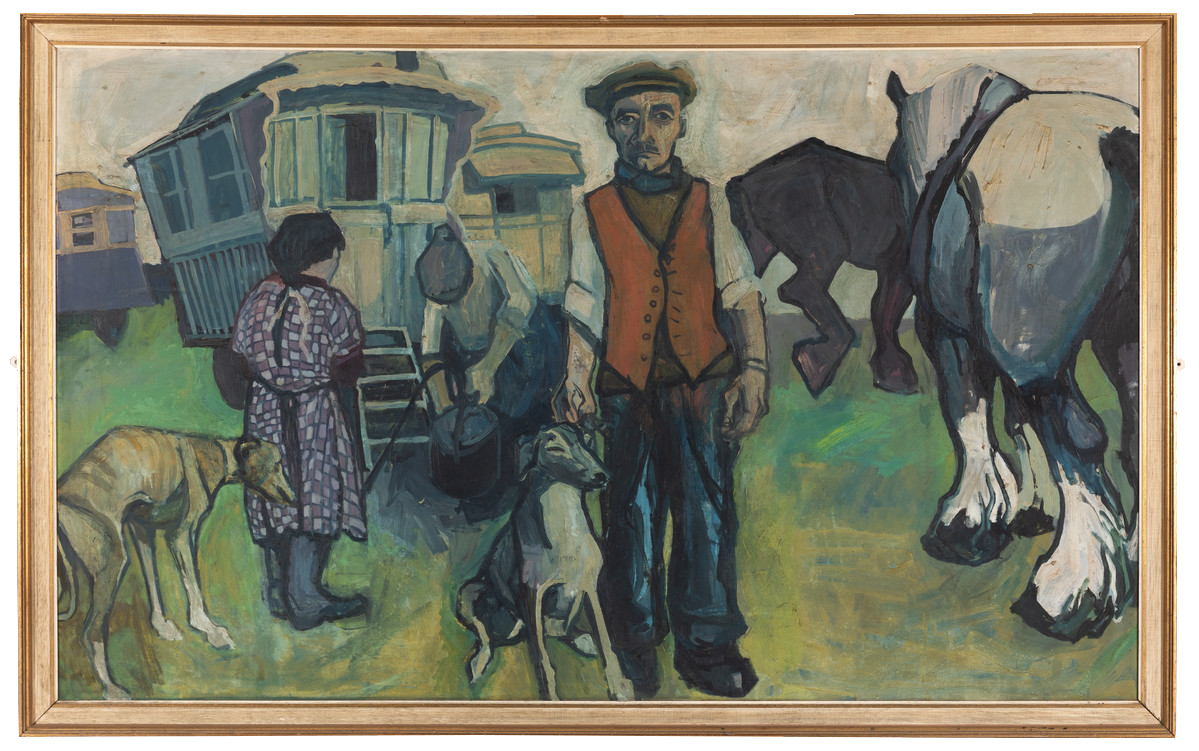GRT History Month: An Unfinished Painting

Whilst the origins of the below painting are somewhat shrouded in mystery, much can be learned from it (even in its unfinished state) about the lives of Gypsy, Roma and Traveller communities.
By exploring The MERL’s Bob Dawson Collection and the museum library, we have been able to identify the different aspects of Traveller life that this painting depicts. In this online exhibition, we highlight these through references to the painting and by featuring a range of related objects from our collections.
Much like the painting, The MERL’s representation of GRT communities has a strong foundation but is unfinished. There is much room to add depth and perspective to our practices. This is a starting point. From here, we hope to gather more personal stories, move away from stereotypical ideas, and make space in our collections for people whose lives have shaped, and continue to shape, the English countryside.